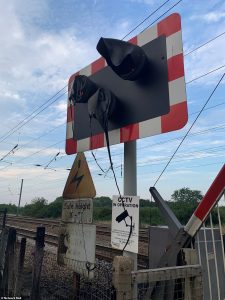Red Bull boss Christian Horner has dismissed claims his team duped the FIA with an elusive flexible floor, labelling suggestions made by Mercedes counterpart Toto Wolff, “total rubbish”.
The FIA recently announced that an expanded version of the technical directive concerning the cars’ floors will come into effect ahead of August’s Belgian Grand Prix, despite opposition from some top teams.
The directive is being revised to enhance safety by attempting to reduce porpoising with a new metric. But the governing body is also stepping in to prohibit teams from flexing their floors after allegations some were exploiting a loophole in the regulations to improve performance.
READ MORE: Surprise twist in Tigers coaching plans
READ MORE: Eye-watering amount ‘cashed up bogan’ Cameron Smith has won
READ MORE: ‘Sore losers’ a stain on epic Origin finale
Mercedes have been one of the teams affected most by porpoising and believe championship contenders Red Bull and Ferrari are running more flexible floors than the rules intended, with a focus on the wooden plank and skid blocks underneath the cars.
Both Red Bull and Ferrari have insisted their cars are legal, passing all official FIA checks up to this point while suffering little to no bouncing. They have also both voiced their discontent about the new technical directive.
Asked by Sky Sports F1 whether he thought some teams were disrespecting the rules, Mercedes team principal Wolff said: “I think so. I haven’t been able to squeeze the skids of certain teams.”
Questioned who those certain teams were, he answered: “We are looking at our competitors.”
But Horner hit back at the assertion that his team were utilising a flexing floor to improve.
“That’s total rubbish,” he said.
“Absolutely no issues or concerns on our floor.”
He also joked that Wolff was “referring to the cars around him at the moment”, taking a dig at Mercedes’ plunge to third in the constructor standings this year.
Porpoising is caused by the repeated stalling of airflow beneath a car. As the car gathers speed, the aerodynamics in the car’s floor suck it to the ground, until it eventually stalls. This releases the suction, and the tension in the car’s suspension pulling it back upwards.
Previous efforts to reduce porpoising included metrics to measure the vertical oscillation of the cars, however the revised technical directive will emphasise plank wear and flexibility.
F1’s regulations state that a car’s floor plank can only flex by 2mm. However, the FIA’s checks only occur in three areas of the floor, and there are suspicions that some teams have been able to engineer more flex in places they aren’t checking – potentially thanks to the mounting of their skid blocks and titanium plates that are fixed onto the plank.
There are suggestions that teams have been able to instead get up to 6mm of flex because of this, which would give an aerodynamic benefit as the cars would be able to run a higher rake while being lower to the ground.
For a daily dose of the best of the breaking news and exclusive content from Wide World of Sports, subscribe to our newsletter by clicking here!

